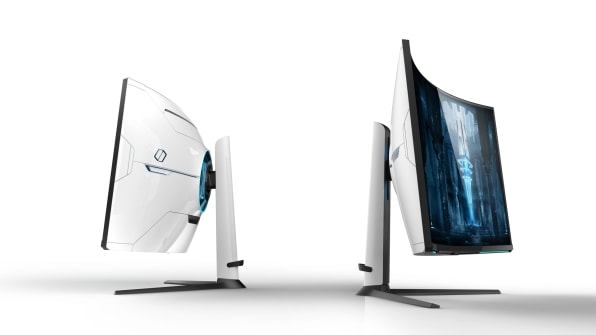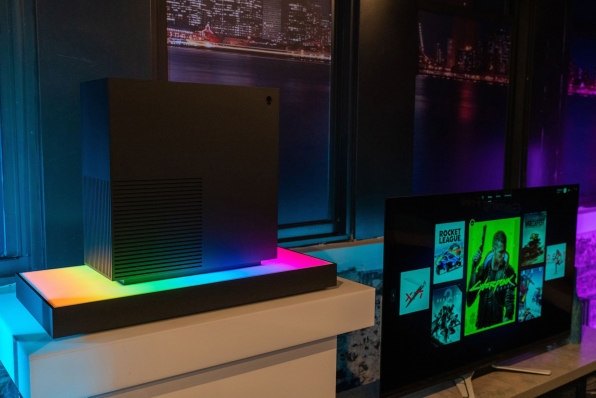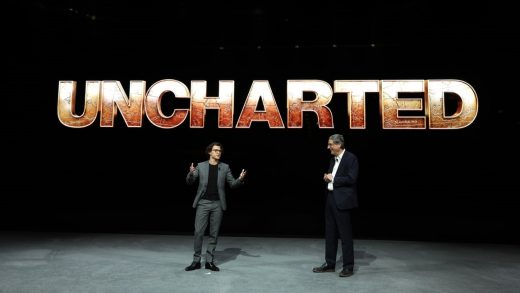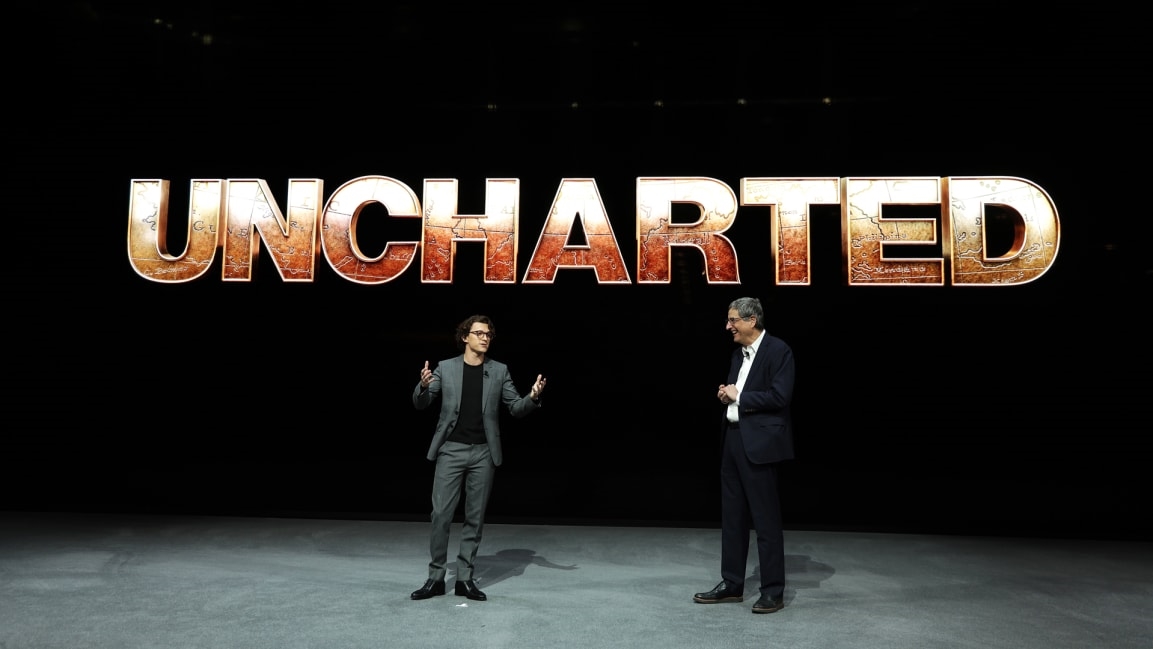The video game industry stole the spotlight at CES 2022
Video games usually are something of an afterthought at the annual Consumer Electronics Show.
The show has certainly had its moments in gaming. It’s where the Xbox was revealed, not to mention the Nintendo Entertainment System. And it was where Sony announced it was working on a game system with Nintendo in 1991 (before Nintendo, the next day, proclaimed it was walking away from that partnership).
By 1995, the video game industry had a trade show of its own—E3—and CES was more focused on other technology. But in 2022, the video game world flexed its muscle at CES once again, reminding tech companies and consumers of its pop culture and market strength.
No one made that clearer than Sony, which brought Spider-Man star Tom Holland onstage to promote the upcoming cinematic version of Uncharted, showing a full scene of one of the game’s most iconic moments (when Nathan Drake must climb a series of crates that are dangling from the back of a plane as enemies try to dispatch him). The company also gave Neil Druckmann, copresident of Naughty Dog, a spotlight, where he confirmed the studio is working on “multiple game projects” and promised more details on The Last of Us TV series in the near future.
Plus, Sony gave a brief update on its next-generation VR device, cleverly titled PS VR2, touting enhanced controls and 4K HDR visual fidelity, as well as eye tracking and haptic feedback it says will heighten the sensation of in-game action. It also unveiled Horizon: Call of the Mountain, a new entry in its popular franchise built exclusively for PS VR2.
There was plenty of hardware for the PC gaming contingent as well. Samsung showcased its Odyssey Neo G8 gaming monitor, which features a 4K screen with a 240Hz refresh rate and a 1ms response time, virtually eliminating lag if you’ve got a good video card and the right processor.

[Photo: courtesy of Samsung]
Also on the hardware front, LG and HP both offered almost absurdly high-powered suggestions. LG’s UltraGear 17G90Q gaming laptop has a 17-inch screen and an 11th-generation Intel Tiger Lake H CPU and the brand-new nVidia 3080 Max-Q GPU. (It’s customizable up to 32GB of RAM and 1TB of storage.) HP’s Omen 45L, meanwhile, includes a ridiculously fast Intel 12th-Gen i9-12900K CPU, a top-tier Nvidia 2080 Ti graphics card, up to 32GB of RAM and 1TB of NvME storage. The real interesting feature, though, is the “cryo chamber” cooling radiator, which is on the outside of the system to provide cooler airflow. That could result in a quieter system and one that’s a favorite of overclockers.
Looking a little further down the road, Alienware showed off a concept device called Nyx, which would allow a PC (assuming it’s powerful enough) to stream games to virtually any screen in your house, switching, for example, from a PC monitor to your living room TV on the fly. One machine, again assuming its powerful enough, could also run up to four games on various screens throughout the house. It’s a fascinating idea, though it is admittedly priced far out of most people’s budget these days.

On the graphics card front, nVidia made waves at its press conference, unveiling its most high-end GeForce card yet, the RTX 3090 Ti. (Good luck getting your hands on that, given the supply issues, the chip shortage, and the breathtaking demand for GPUs these days.) It also unveiled the more budget-friendly GeForce RTX 3050, an entry-level desktop graphics card that will sell for $249. (Pricing on the RTX 3090 Ti will come later this year.)
Finally, Arcade1 Up, which brought the arcade cabinet into the home, unveiled the Pro Series of devices, with Killer Instinct being the first out of the gate. These systems will offer name-brand controls from Happ and be closer in scale to the full-size cabinets that were in arcades, with 19-inch screens and Wi-Fi for online play. The extra touches will come at a premium, though: The Pro Series is expected to retail in the neighborhood of $1,000, versus the $450 or so for the standard model.
CES won’t ever replace E3, of course. It’s a hardware-dominant show that covers a broad spectrum, and the real proving ground in the game industry is software. But for the first time in a long time, games managed to steal some of the CES spotlight from other industries, which could be the start of a lasting trend.
(29)



